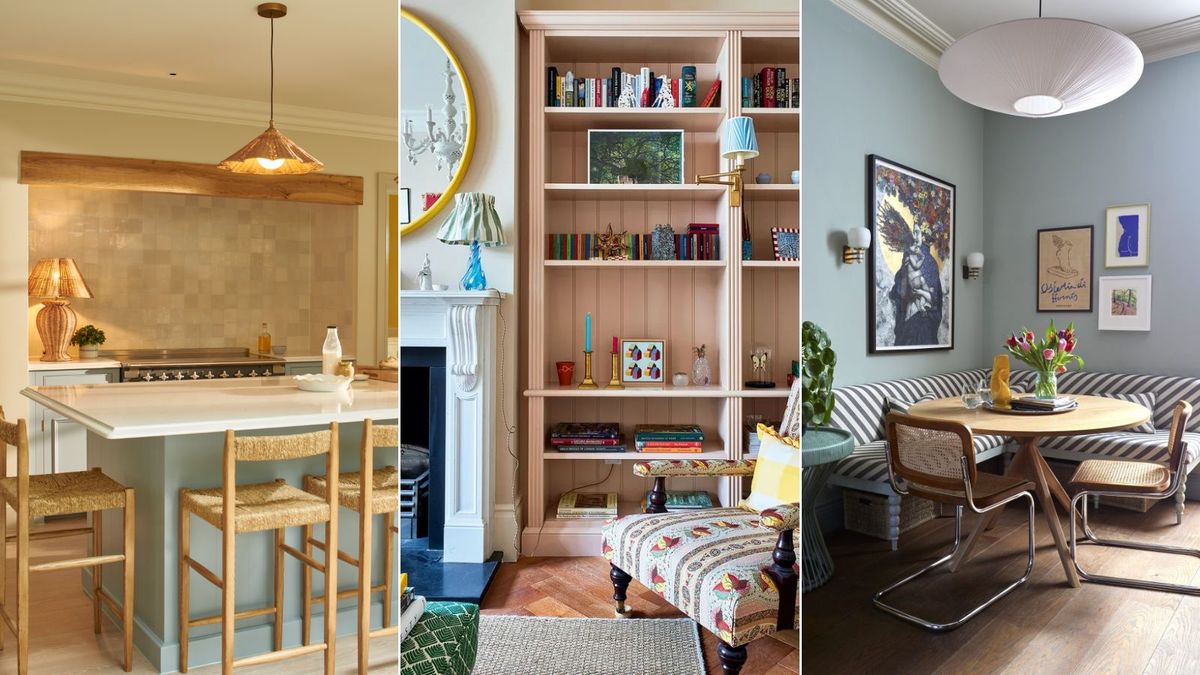7 Home Design Styles That Will Never Go Out of Style, According to Designers
:max_bytes(150000):strip_icc()/DesignbyEmilyHendersonDesignandPhotobySaraLigorria-Tramp_663-9f076752d452416580bee9258b885809.jpg)
Just like fashion trends, interior design styles come and go. Home design aesthetics, like Tuscan-themed rustic décor and shabby chic, can be all the rage one minute and old and outdated the next. However, some home design styles are enduring, remaining relevant over several decades or even centuries. These interior design aesthetics ensure your home stays timeless, no matter how frequently home décor trends change.
We spoke to seasoned interior designers to determine which home design styles stand the test of time and which elements define these tried and true aesthetics.
Modern Minimalism
Sara Tramp
The main principle of minimalist design is less is more. While western modern minimalism is defined by clean lines, simple silhouettes, and a neutral color palette, it’s a design style that varies from one space to the next. “Its timeless nature comes from its versatility—it complements a wide range of aesthetics and adapts effortlessly to changing trends,” says interior designer Cheryl Clendenon. Other identifiable traits of modern minimalist design include uncluttered spaces with fewer pieces of furniture, open floor plans, and plenty of natural light.
Scandinavian Style
Sara Tramp
Scandinavian style is rooted in the same principles as minimalism, but it also prioritizes comfort and warmth. The word “hygge” is a Scandinavian term that refers to creating a cozy and welcoming atmosphere, and hygge lies at the core of this simple, yet comfortable design style. “The Scandinavian style is timeless because it balances practicality with nature and beauty, creating spaces that are both aesthetically pleasing and comfortable to live in,” says interior designer Deana Duffek.
Like minimalism, Scandinavian style is marked by functional layouts, clean lines, and neutral colors. This aesthetic also includes a focus on the use of natural materials and sustainability.
Modern Organic
Kelly Brown
Modern organic style takes its cue from nature, connecting indoor and outdoor spaces through colors, materials, and shapes. “This approach breathes authenticity through materials,” says Joyce Huston, the lead interior designer and co-founder of Decorilla. “It’s a design that feels like a deep breath, not a magazine spread.”
Nothing is as timeless as nature, which is why the use of wood, natural light, and earthy colors will never go out of style. Handcrafted ceramics, natural textures like stone, and plants can help add depth and visual intrigue to a modern organic space.
Mid-Century Modern
Zeke Ruelas
Mid-century modern style is characterized by simple geometric shapes and lines, mixed materials including wood, metal, vinyl, and glass, bold accent colors, and prioritizing function over ornamentation. “Iconic pieces like Eames shell chairs and Saarinen’s Tulip table embody its minimalist appeal, creating interiors that are both comfortable and chic,” says interior designer Gretchen Rivera.
The style feels effortless, and even though it was born in the mid-20th century, it remains popular to this day. The clean, unfussy look pairs seamlessly with both vintage and contemporary spaces, making it a lasting favorite, says Clendenon.
Classic Traditional
Ryan McDonald
Easily identified by traditional architectural details like wainscoting, crown molding, and symmetry, this style originates as far back as the 18th century. Some key elements include chandeliers, bookcases, elegant furnishings, classic patterns, and rich color palettes that often incorporate jewel tones. “Its timeless appeal lies in its ability to evoke a sense of history and refinement, making it a style that feels both familiar and enduring,” says Clendenon. Today, many people blend traditional style with modern elements, making spaces feel updated without taking away from their historical feel.
Coastal
Creative Tonic
A design style as timeless as the sea itself, coastal interior design has a relaxed, tailored look. “Coastal design evokes a sense of tranquility with light, airy spaces, natural textures, and a soothing color palette inspired by the ocean,” says Duffek. Coastal homes typically feature white walls, natural textures and materials, large windows, and plenty of natural light, blending classic elements for a design style that endures the test of time.
Arts and Crafts
The arts and crafts movement began in Victorian England in response to the emergence of industrialization and emphasized craftsmanship. In the States, it is perhaps most famously known by the designs of Frank Lloyd Wright, and is characterized by open floor plans, organic materials, and a cozy flow between indoors and outdoors. Arts and crafts revolutionized design, says Rivera.
Arts and crafts interiors feature wide horizontal lines and pieces that prioritize craftsmanship and functionality. The style is somewhat eclectic, blending art with textiles and architecture. More than 100 years later, the arts and crafts style shows no sign of going out of style.
link







